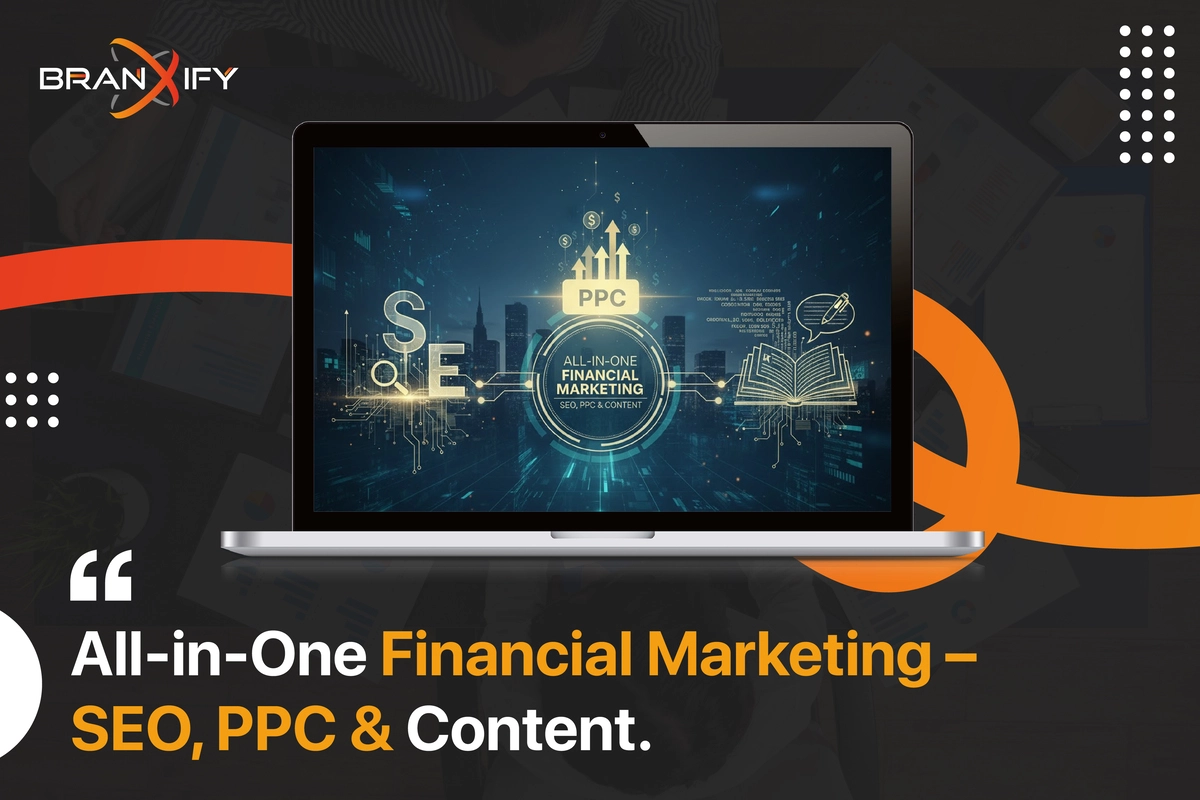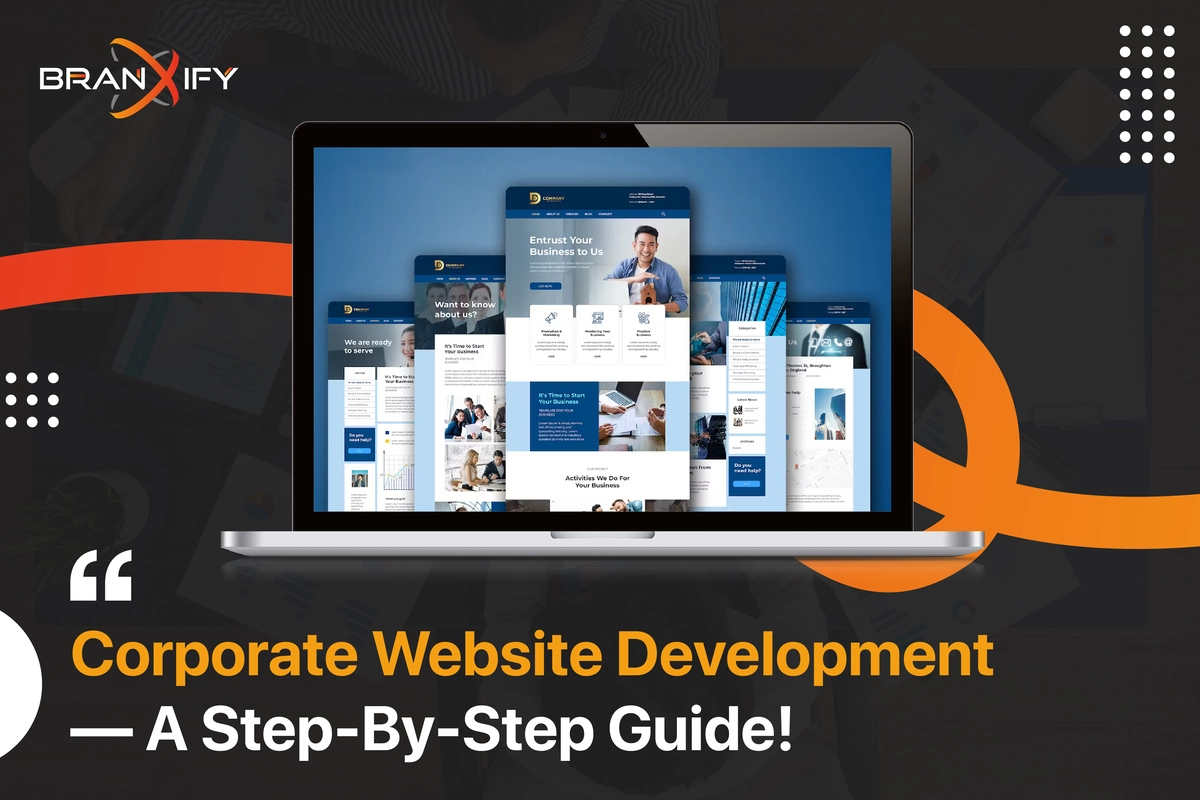Search Engine Optimization (SEO) has always been the cornerstone of any successful digital marketing strategy. Over the years, the algorithm updates, trends, and best practices for SEO have evolved. However, there are still a few essential practices that remain relevant and continue to work wonders for boosting visibility in search engine results. Among these, the use of keywords remains one of the most powerful tools.
While keyword research and optimization have been long-standing pillars in SEO, there are specific tactics that have surfaced in recent years—two in particular—that have seriously elevated my SEO game. These aren’t your typical keyword strategies. These are advanced, refined approaches that can make a massive difference in search rankings and user engagement, especially when implemented by a skilled SEO company.
In this post, we’re going to share the two keyword tricks that have supercharged my SEO performance and why they work wonders when applied correctly.
Trick 1: Semantic Search—Going Beyond Exact Match Keywords
If you’re still obsessing over exact match keywords, it’s time to think bigger. The landscape of SEO has shifted significantly in recent years, primarily due to the rise of semantic search. This refers to how search engines, like Google, understand the meaning behind words, rather than focusing solely on the keywords themselves. In simpler terms, search engines now prioritize context, intent, and relevance—something an experienced SEO company can help you navigate for optimal results.
- How to find easy keywords?
Finding low-competition, relevant keywords is crucial for your content. Use tools like Google Keyword Planner and Ubersuggest to identify specific long-tail keywords, aligning with user intent and competitor insights for better rankings.
So, what does this mean for your SEO strategy?
The Power of Latent Semantic Indexing (LSI)

One of the most powerful tools in this new age of SEO is Latent Semantic Indexing (LSI). LSI refers to a concept in which search engines identify the relationships between different terms and phrases that are related to a primary keyword. Instead of simply ranking content based on a keyword’s frequency, LSI helps Google and other search engines understand the overall theme of the content—something Branxify, an expert SEO company, leverages to enhance your website’s search engine performance.
For example, let’s say you’re writing an article about “healthy eating.” Instead of just focusing on the keywords like “healthy eating,” “nutrition,” and “diet,” you should consider using semantically related terms like “balanced diet,” “nutrient-rich food,” “food for weight loss,” “vitamins,” and “whole foods.” These related terms help search engines understand that your article is comprehensive and relevant to the broader concept of health and wellness.

Why It’s Important
By going beyond exact match keywords and adopting a more semantic approach, your content will rank higher for a variety of related search queries. It improves your chances of ranking for long-tail keywords phrases that are less competitive but incredibly valuable for targeted traffic. Furthermore, it ensures that your content is more natural and relevant, which improves user engagement and reduces bounce rates. Branxify – best SEO company, specializes in implementing these strategies to maximize your website’s SEO potential and drive quality traffic.
How to Implement It:
- Use a variety of related terms: Try incorporating words and phrases that are semantically related to your primary keyword. Tools like LSI Graph and Answer the Public can help you discover related terms.
- Optimize for search intent: Understand the underlying intention behind the searches. Are users looking for informational content, or are they ready to make a purchase? Tailor your content accordingly.
- Focus on topic clusters: Instead of writing isolated blog posts, top seo company like Branxify create content hubs around key topics. For instance, if your main topic is “fitness,” create subtopics like “strength training,” “yoga,” and “healthy nutrition.” Linking them together will improve the overall SEO of your website.
The Role of Natural Language Processing (NLP)
Google’s Natural Language Processing (NLP) technology is also evolving, and it understands the context of sentences and words much more effectively than in the past. This means that Google is not just looking at your keywords; it’s understanding your content’s meaning and context.
To make the most out of this, your content should flow naturally. Avoid keyword stuffing and instead focus on answering questions in a conversational tone. A more natural, user-friendly writing style will not only help you rank better, but it will also encourage readers to spend more time on your page. Partnering with a skilled SEO company can further optimize your content strategy for maximum engagement and improved rankings.
Trick 2: The Power of Keyword Intent—Optimizing for User Intent
User intent is perhaps the most underappreciated yet powerful aspect of keyword research. Understanding the intent behind a user’s search can drastically improve the chances of ranking well for a specific keyword. If you’re targeting a keyword with the wrong intent or optimizing a page that doesn’t align with what the user is actually looking for, your SEO efforts might go in vain. Branxify, an expert SEO company, specializes in identifying and leveraging user intent to ensure your website ranks effectively and meets your audience’s needs.
Types of User Intent
There are generally three types of search intent:
- Navigational Intent: The user is looking for a specific website or page (e.g., “Facebook login”).
- Informational Intent: The user is searching for information (e.g., “How to make a cake”).
- Transactional Intent: The user is ready to make a purchase or take an action (e.g., “Buy iPhone 15 online”).
For example, if you’re targeting a keyword like “best laptops,” the intent could vary:
- Someone searching for “best laptops for gaming” likely has transactional intent because they want to buy a gaming laptop.
- Someone searching for “how to choose the best laptop” likely has informational intent because they want to learn more about what makes a laptop great before purchasing.
Why Understanding Intent Matters

SEO Company experts understand that the rise of user-focused algorithms means that search engines are getting smarter about distinguishing between different types of intent. If you don’t optimize your content with the correct intent in mind, it’s less likely to rank well. A transactional keyword needs to have clear CTAs (call-to-action) that guide the user towards conversion, while an informational keyword should be structured to provide valuable, educational content.
How to Implement It:
- Identify the search intent: Before choosing your keywords, figure out what type of intent they carry. If they are informational, create blog posts, how-to guides, or FAQs. For transactional keywords, create product pages, reviews, or landing pages.
- Align your content structure: Once you understand the search intent, Branxify SEO company suggests structuring your content accordingly. A problem-solving blog post should include step-by-step guidance and useful insights, while a product page should feature persuasive content and clear purchasing paths.
- Match the user’s stage in the buyer journey: Consider where the user is in the buying cycle. Are they just beginning to gather information, or are they ready to make a purchase? Cater to this with the right content.

How These Two Tricks Work Together
Now, you may be wondering: How do these two tricks—semantic search and keyword intent—fit together?
The answer is simple: they complement each other.
When you focus on semantic keywords, you ensure that your content is rich, informative, and relevant. Top rated SEO Company increases your chances of ranking for a broader set of related terms and queries. But when you take into account keyword intent, you further refine your approach to cater to what the user is actually looking for. By combining both, you create a user experience that is not only optimized for search engines but also valuable to the person searching.
For example, imagine you’re optimizing an article about “how to fix a leaky faucet.” By understanding semantic search, you would include terms like “plumbing tips,” “DIY repairs,” and “water leak solutions” to cover a range of related concepts. By also considering intent, you would ensure that your content answers common user questions, guides the reader through each step, and offers clear solutions.
By blending these two strategies, Branxify the best seo company creates content that both search engines and users find valuable. This results in better rankings, more traffic, and ultimately, a higher conversion rate.
Also Read: How to create a winning B2B SEO campaign in 2025?
Why Collaborate with Branxify for Successful SEO?
1. Expertise in SEO:
Branxify seo company boasts a team of seasoned SEO specialists who know the ins and outs of search engine algorithms, ensuring your website ranks higher and stays ahead of the competition.
2. Tailored Strategies:
No one-size-fits-all approach here. Branxify creates personalized SEO plans based on your business goals and target audience, ensuring maximum relevance and impact.
3. Comprehensive SEO Services:
From on-page optimization to link building and content marketing, Branxify B2B SEO agency covers every aspect of SEO to boost your website’s performance on search engines.
4. Cutting-Edge Tools & Techniques:
Branxify stays updated with the latest SEO trends and tools to implement the most effective strategies, giving your website a competitive edge.
5. Data-Driven Results:
Branxify seo company services leverages detailed analytics to continuously refine and improve SEO efforts, providing transparent reports and measurable results for your business.
6. Increased Organic Traffic:
With a focused approach, Branxify ensures that your website attracts high-quality, organic traffic, helping you convert visitors into customers.
7. Long-Term Success:
Branxify’s SEO strategies aren’t about quick fixes. The goal is sustainable, long-term growth that continuously improves your rankings and visibility.
8. Proven Track Record:
Branxify’s past success stories showcase their ability to drive significant improvements in website rankings, traffic, and online presence across various industries.
9. SEO that Scales:
Whether you’re a startup or an established brand, Branxify provides SEO services that grow with your business, adapting to changes in both your needs and the SEO landscape.
10. White-Hat SEO Techniques:
Branxify ensures all SEO practices are ethical and compliant with search engine guidelines, avoiding penalties and protecting your brand’s reputation.
Why SEO From Scratch Is Important?

How Can I Make My SEO Successful?
An experienced SEO company can help you navigate the complexities of SEO, or Search Engine Optimization, which is an essential part of digital marketing. It helps you drive organic traffic to your website by improving its visibility in search engine results pages (SERPs). However, the journey to SEO success can be a daunting one, filled with endless tips, strategies, and tactics that promise to bring you results. The truth is, SEO is not a one-size-fits-all solution, but there are some core principles and strategies that will significantly increase your chances of success.
- Is SEO easy?
SEO demands strategic thinking, technical skills, and creativity. It involves quick learnable basics like keyword research, but mastering it requires ongoing effort, adaptability, and in-depth knowledge of search engines.

In this section, we’ll walk you through the essential steps you need to take to make your SEO strategy a resounding success.
Understanding SEO: The Basics That Set You Up for Success
Before jumping into the more complex aspects of SEO, it’s crucial to understand the fundamentals. Partnering with an experienced SEO company can help guide you through this process. SEO is essentially the process of optimizing your website to appear higher in search engine results for targeted keywords. This involves improving both on-page and off-page factors to signal to search engines like Google that your website is authoritative, relevant, and user-friendly.
Key On-Page Factors for SEO Success
1. High-Quality Content
Content is king in the world of SEO, and for good reason. Search engines prioritize content that is relevant, useful, and well-written. When Branxify reliable SEO company creates content, we ensure that it is tailored to your audience’s needs and solves their problems. A clear, engaging writing style paired with well-researched topics will not only attract visitors but also keep them engaged.
2. Keyword Optimization
Choosing the right keywords is a critical aspect of SEO. Make sure you’re using a variety of keywords that align with search intent (we’ll talk more about this later). However, avoid keyword stuffing—this can hurt your rankings. Use keywords naturally throughout your content, and integrate LSI (Latent Semantic Indexing) keywords to signal broader relevance.
3. Meta Tags and Descriptions
Your title tags, meta descriptions, and headers are some of the first things users and search engines see when browsing your site. Craft compelling and clear meta descriptions that encourage users to click on your link. Usually, Branxify SEO Company ensures that your title tags are descriptive, concise, and included in your primary keywords.
Technical SEO: Optimizing Your Site for Search Engines
Technical SEO is just as important as content creation. It involves optimizing the back-end of your website to make it easier for search engines to crawl, index, and rank your pages.
1. Site Speed
Google places a high priority on user experience, and a slow-loading site will lead to higher bounce rates. An experienced SEO company can help identify key areas for improvement in site speed. Use tools like Google PageSpeed Insights to test your website’s speed and make improvements like compressing images and enabling browser caching.
2. Mobile Optimization
With mobile usage on the rise, it’s essential that your website is mobile-friendly. Google uses mobile-first indexing, meaning it predominantly uses the mobile version of your site for ranking. Ensure your site is responsive and that it provides a seamless user experience across devices.
3. SSL Encryption
Security is a ranking factor for Google. Having an SSL certificate (indicated by “HTTPS” in your URL) is essential for ensuring your website is secure. Not only does this protect your visitors’ data, but it also signals to search engines that your site is trustworthy.
Building Authority with Off-Page SEO
Off-page SEO involves activities that take place outside of your website but still affect your rankings. Partnering with an expert SEO company can help you implement effective off-page strategies. The most common off-page strategy is building backlinks, but other factors like social media engagement and brand mentions also contribute to your website’s authority.
The Importance of Backlinks
Backlinks are like votes of confidence from other websites, signaling to search engines that your content is credible and valuable. Focus on acquiring high-quality backlinks from reputable websites within your industry. Guest posting, content collaborations, and influencer outreach are great ways to gain backlinks.
Social Media and Brand Mentions
While social media signals don’t directly impact rankings, a strong social media presence can amplify your content’s reach. An experienced SEO company can help you craft a strategy to effectively leverage social media for maximum impact. Share your content on platforms like Facebook, Instagram, and LinkedIn to drive traffic. Additionally, brand mentions—even without links—can boost your online authority and signal to search engines that your brand is relevant and trusted.
What is the difference between on-page SEO and off-page SEO?
| Aspect | On-Page SEO | Off-Page SEO |
| Definition | Actions on your site to improve SEO | Actions outside your site to build authority |
| Focus | Content, technical optimization, structure | Backlinks, social media, brand mentions |
| Purpose | Helps search engines understand content | Builds credibility and trust |
| Impact | Improves site rankings | Enhances authority and visibility |
Tracking and Analytics: Measuring Your SEO Success
Finally, it’s essential to track your SEO progress using analytics tools. An expert SEO company can help you interpret these insights and adjust your strategy effectively. Google Analytics and Google Search Console provide valuable insights into your website’s traffic, user behavior, and search performance. By regularly reviewing your data, you can adjust your strategy, discover new opportunities, and stay ahead of the competition.
Key Metrics to Monitor
- Organic Traffic: How many visitors are coming from organic search results?
- Bounce Rate: Are users leaving your site quickly, or are they engaging with your content?
- Click-Through Rate (CTR): How often do users click on your search results?
- Keyword Rankings: Are your targeted keywords moving up in the SERPs?
By continually refining your SEO strategy based on these insights, you’ll move closer to achieving SEO success.
Before:

After Best SEO Services:

What is the Best SEO Strategy?
What is SEO best practice? When it comes to SEO, the term “best” can be subjective, depending on your goals, industry, and target audience. However, an experienced SEO company can help you identify and implement proven strategies that will give your website a significant SEO boost and put you ahead of the competition. The key is to combine these strategies in a way that aligns with your specific needs and objectives.
SEO Strategy 1: Comprehensive Keyword Research for Targeted Traffic
Branxify, an SEO company, understands that keyword research is the backbone of any successful SEO strategy. By understanding what your audience is searching for, you can optimize your content to match their needs. But it’s not just about picking the most popular search terms—it’s about targeting keywords that align with user intent and have the potential to drive qualified traffic to your site.
How to Conduct Effective Keyword Research
1. Use Keyword Tools
Google Keyword Planner, SEMrush, and Ahrefs are excellent tools for discovering keyword opportunities. Look for a mix of short-tail and long-tail keywords that reflect both broad topics and specific queries.

2. Understand Search Intent
Search intent is the underlying goal behind a user’s query. There are three main types of search intent:
- Navigational Intent: The user is looking for a specific website (e.g., “Facebook login”).
- Informational Intent: The user is seeking information or answers to questions (e.g., “How to bake a cake”).
- Transactional Intent: The user is ready to take action or make a purchase (e.g., “Buy iPhone online”).
By focusing on keywords that match the right search intent, you can create content that truly satisfies user needs.
3. Analyze Competitors
Branxify, an SEO company, recommends looking at what keywords your competitors are ranking for and seeing if there’s an opportunity to target similar terms or find gaps in their strategy that you can capitalize on. By analyzing competitor keywords, you can identify untapped opportunities and refine your own SEO approach to stay ahead in the market.
SEO Strategy 2: Create High-Quality, Value-Driven Content
Once you have your keywords, it’s time to create high-quality content around them. Branxify, an SEO company, knows that content remains king in SEO, and search engines reward websites that produce informative, engaging, and original content. By crafting content that meets both user intent and SEO best practices, you can improve your rankings and keep visitors coming back for more.
Crafting Content That Ranks
1. In-Depth, Long-Form Content
Google tends to favor longer, comprehensive articles that cover topics in detail. Aim for content that is at least 1,500–2,000 words long, but only if the topic warrants it. Longer content allows you to incorporate more keywords naturally and provide more value to the reader.
2. Answer Questions
Branxify, an SEO company, understands that people use search engines to get answers. By targeting question-based queries, such as “How do I start a blog?” or “What is the best time to post on social media?” you can create content that directly addresses those needs. This approach not only helps you rank for specific, high-intent queries but also increases the chances of your content appearing in featured snippets, driving more traffic to your site.\
3. Keep Content Fresh and Updated
Regularly updating your content with new information helps maintain its relevance. Search engines prioritize fresh content, so keep your articles up-to-date to ensure they remain valuable for users.
SEO Strategy 3: Improve Technical SEO for Better User Experience
Branxify SEO company understands that technical SEO ensures search engines can crawl, index, and rank your site without any barriers. A smooth user experience also plays a critical role in boosting rankings, as Google considers factors like site speed, mobile optimization, and navigation. With Branxify’s expertise, you can ensure your website is technically sound, providing both search engines and users with an optimal experience.
Key Technical SEO Practices
1. Optimize Website Speed
A slow-loading site can drive users away and hurt your SEO rankings. Compress images, enable browser caching, and use content delivery networks (CDNs) to speed up your website.
2. Mobile Optimization
With mobile-first indexing, it’s essential that your site is mobile-friendly. Use responsive design so your website looks great on all devices and provides a smooth browsing experience.
3. Structured Data
Structured data, or schema markup, helps search engines understand your content better. It allows you to appear as rich snippets in the search results, which can increase click-through rates and drive more traffic to your site.
SEO Strategy 4: Build Authority Through Backlinks
What is backlink in SEO?
A backlink is an external link to your site that signals credibility to search engines. Quality backlinks from reputable sources improve rankings; low-quality links may lead to penalties.
Branxify SEO company emphasizes that backlinks play a critical role in boosting SEO rankings. Acquiring high-quality backlinks from authoritative websites signals to search engines that your site is trustworthy and deserving of higher rankings. With Branxify’s expertise, you can build a strong backlink profile that boosts your website’s credibility and improves its search engine visibility.
How to create backlinks?
Creating backlinks requires strategies like guest blogging, broken link building, and skyscraper content. Promoting content on social media also helps attract quality links, enhancing your website’s authority through relevant connections.
1. Guest Blogging
Writing guest posts for reputable blogs in your industry allows you to earn valuable backlinks. Make sure the content is relevant and informative to the host blog’s audience.
2. Skyscraper Technique
Find top-performing content in your niche, create something better, and reach out to websites that link to the original article to suggest they link to your improved version instead.
3. Broken Link Building
Search for broken links on authoritative websites and offer your own content as a replacement. This method is a win-win for both parties.
Wrapping It Up – SEO Company
SEO often involves trial and error, but using semantic search and keyword intent can enhance efforts. Prioritizing context and user intent will improve rankings, drive targeted traffic, and enhance user experience.
A comprehensive SEO strategy, according to Branxify SEO company, includes keyword research, quality content, technical optimization, and authority building, all of which demand patience and persistence for success.







